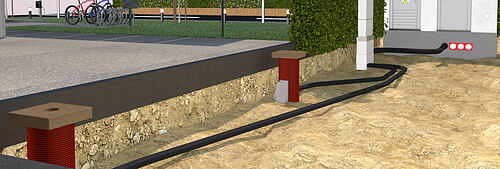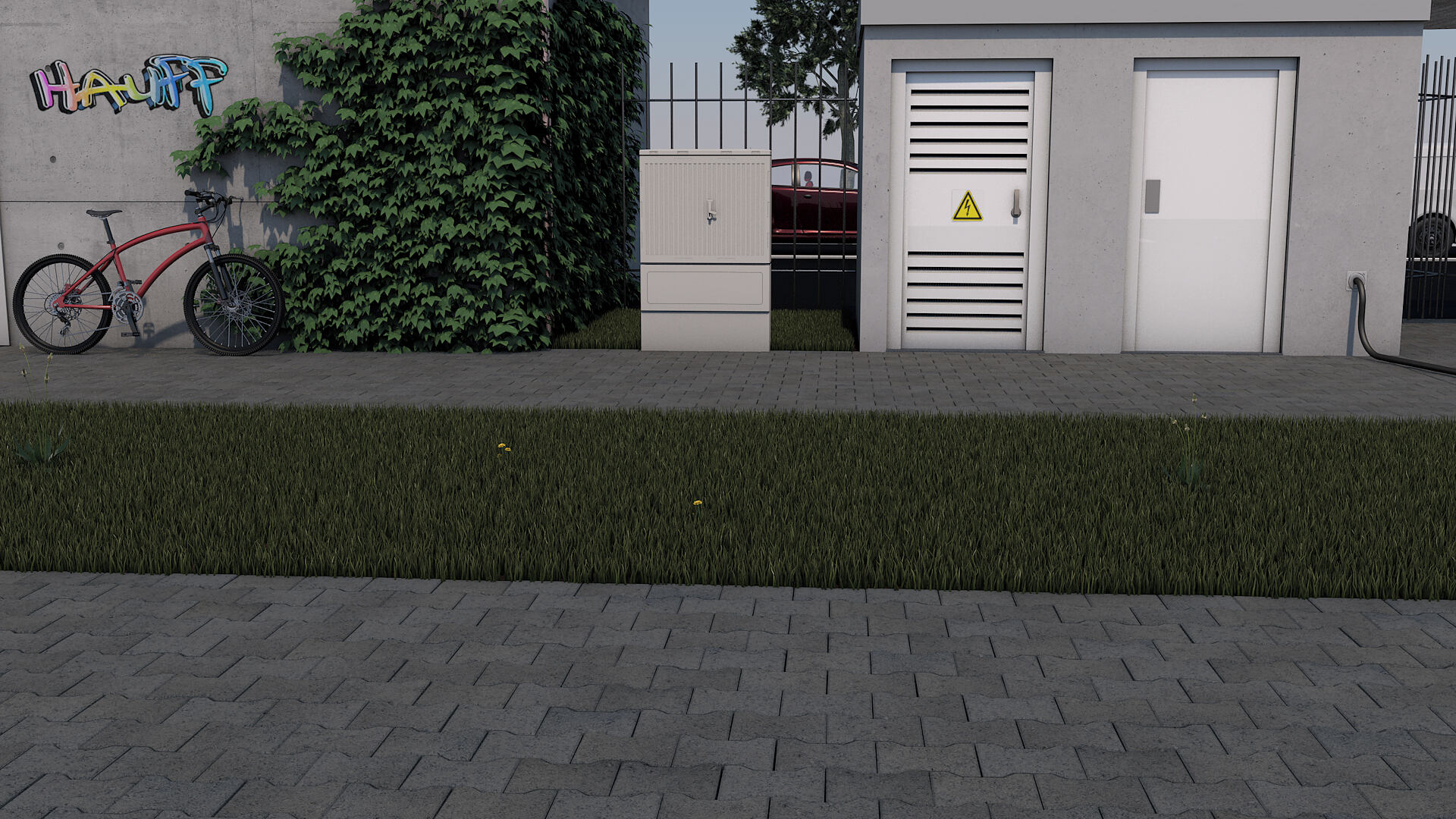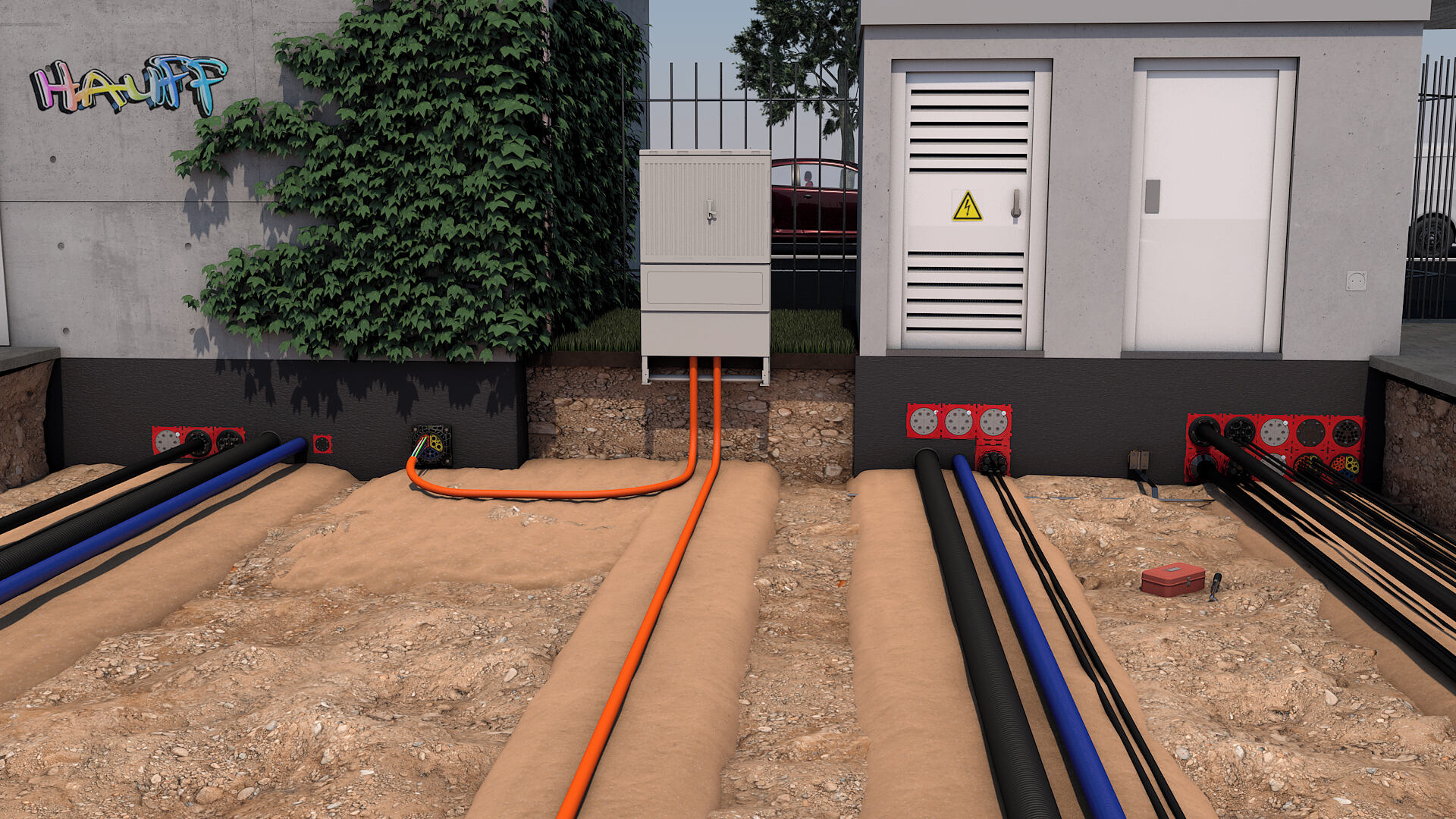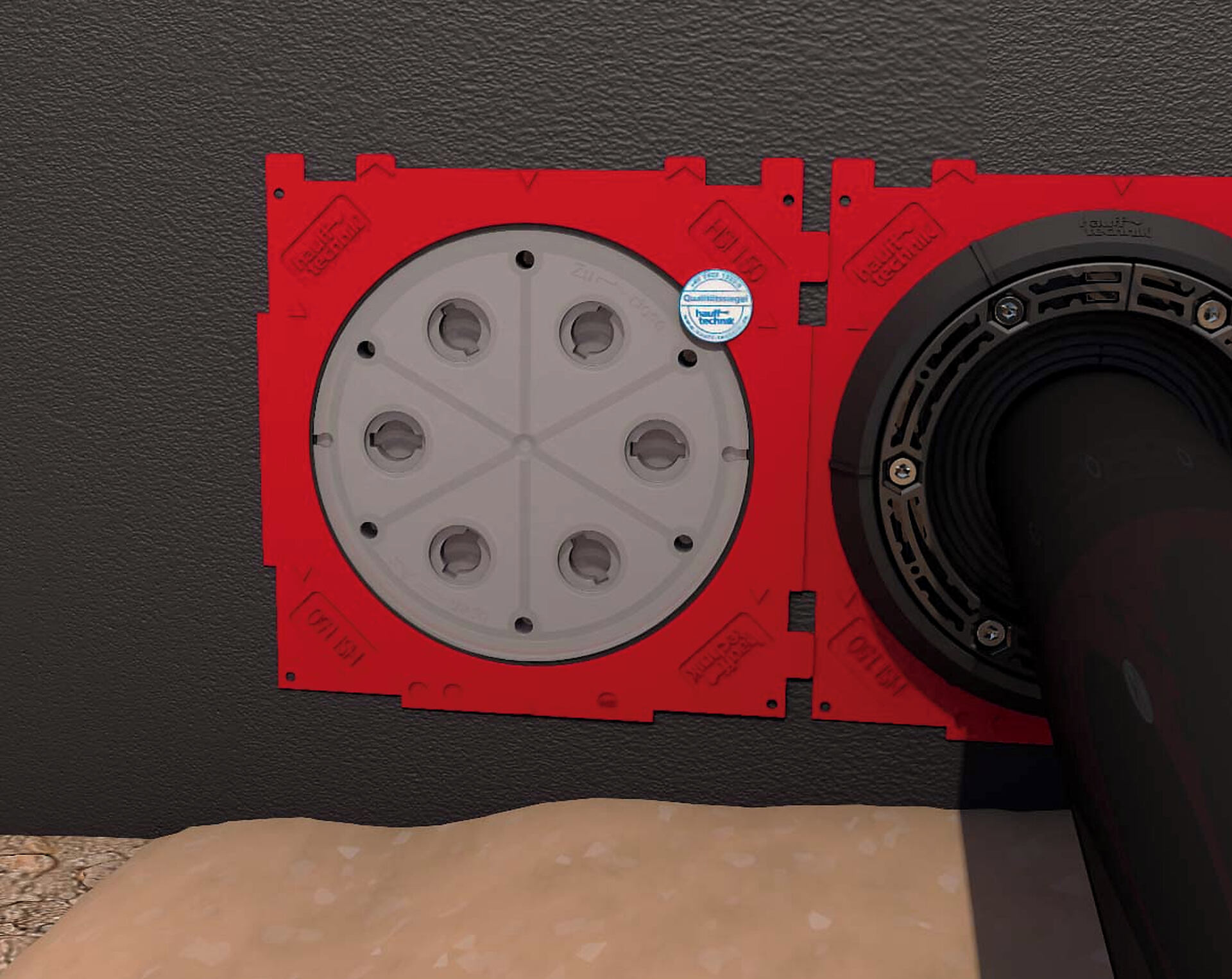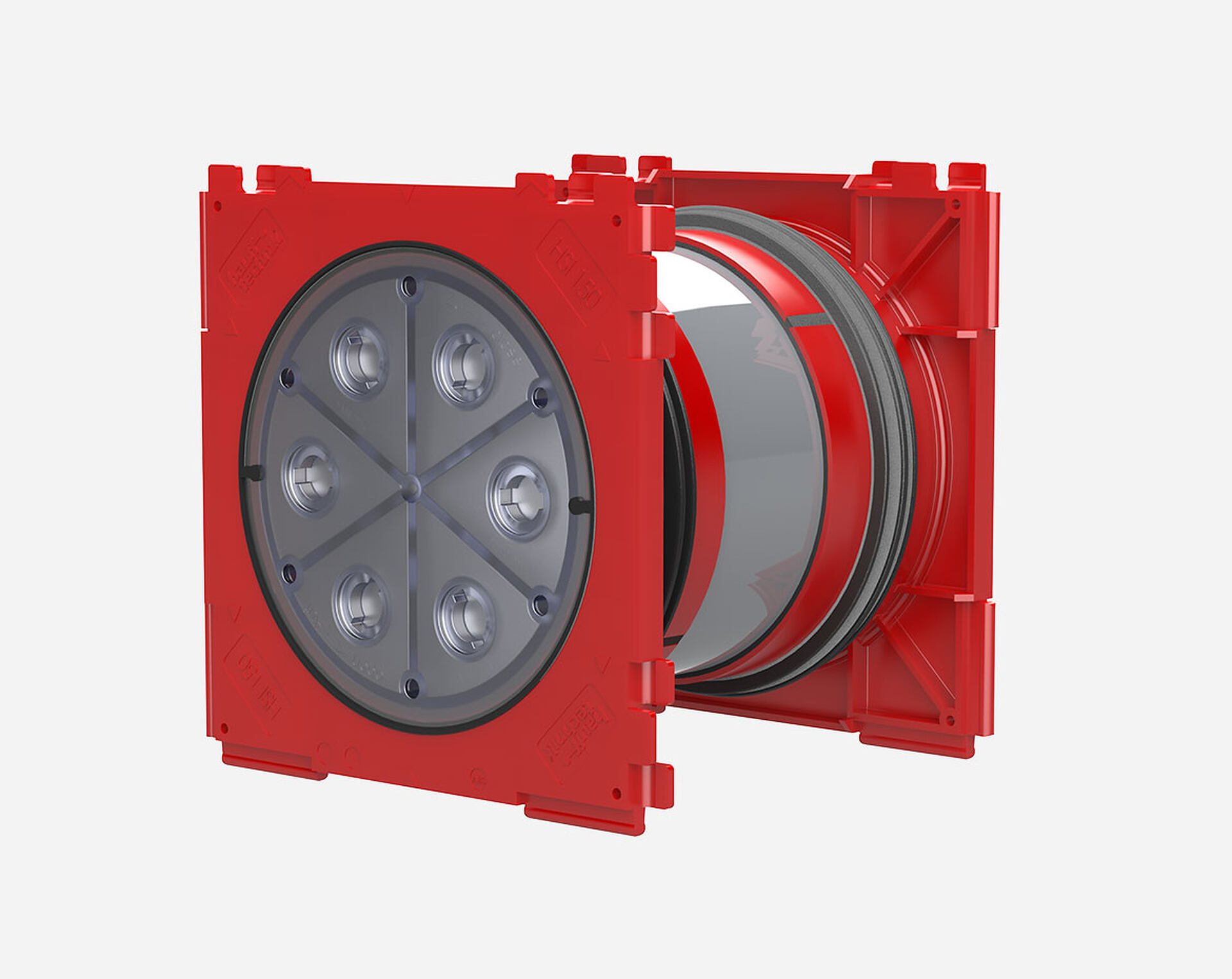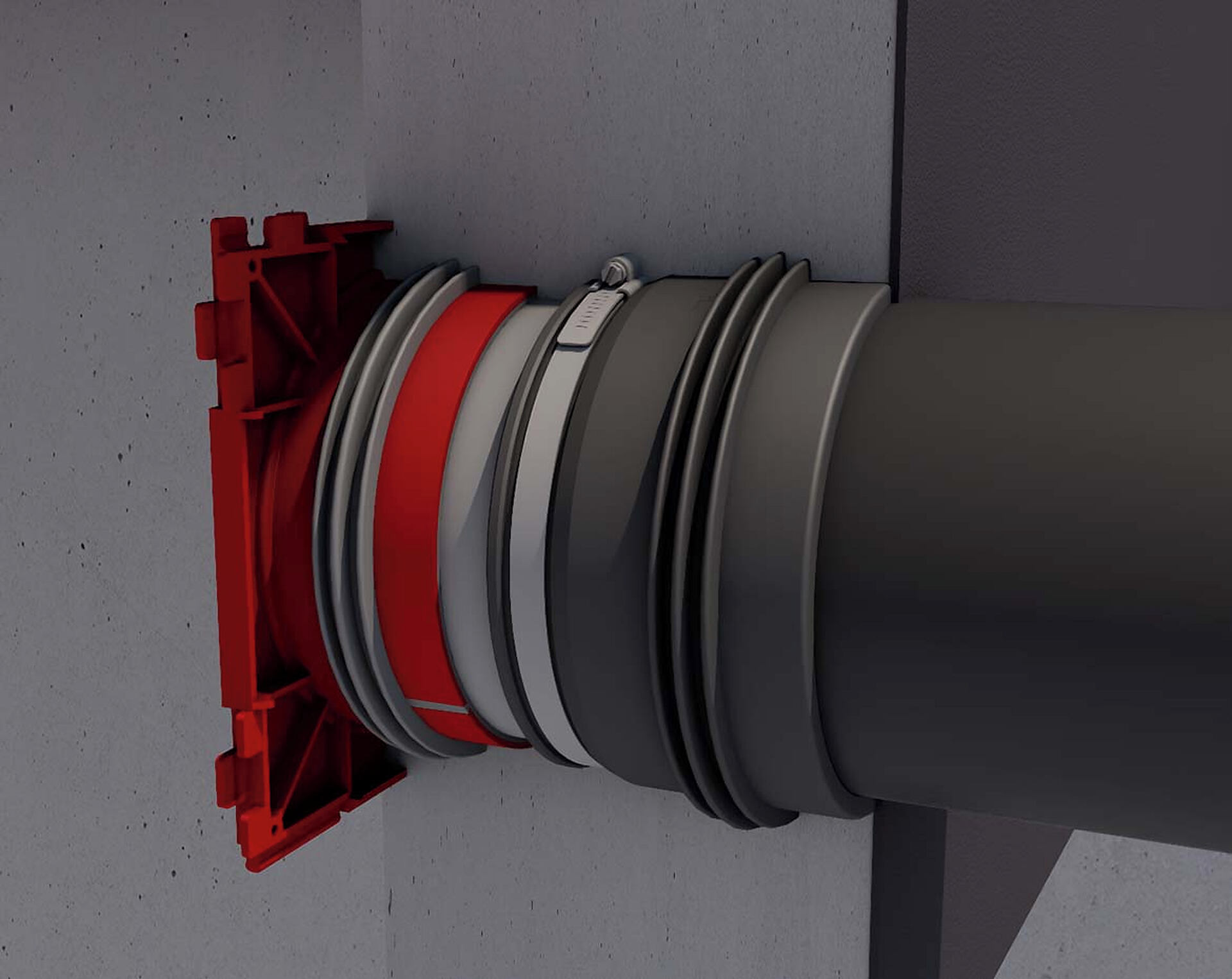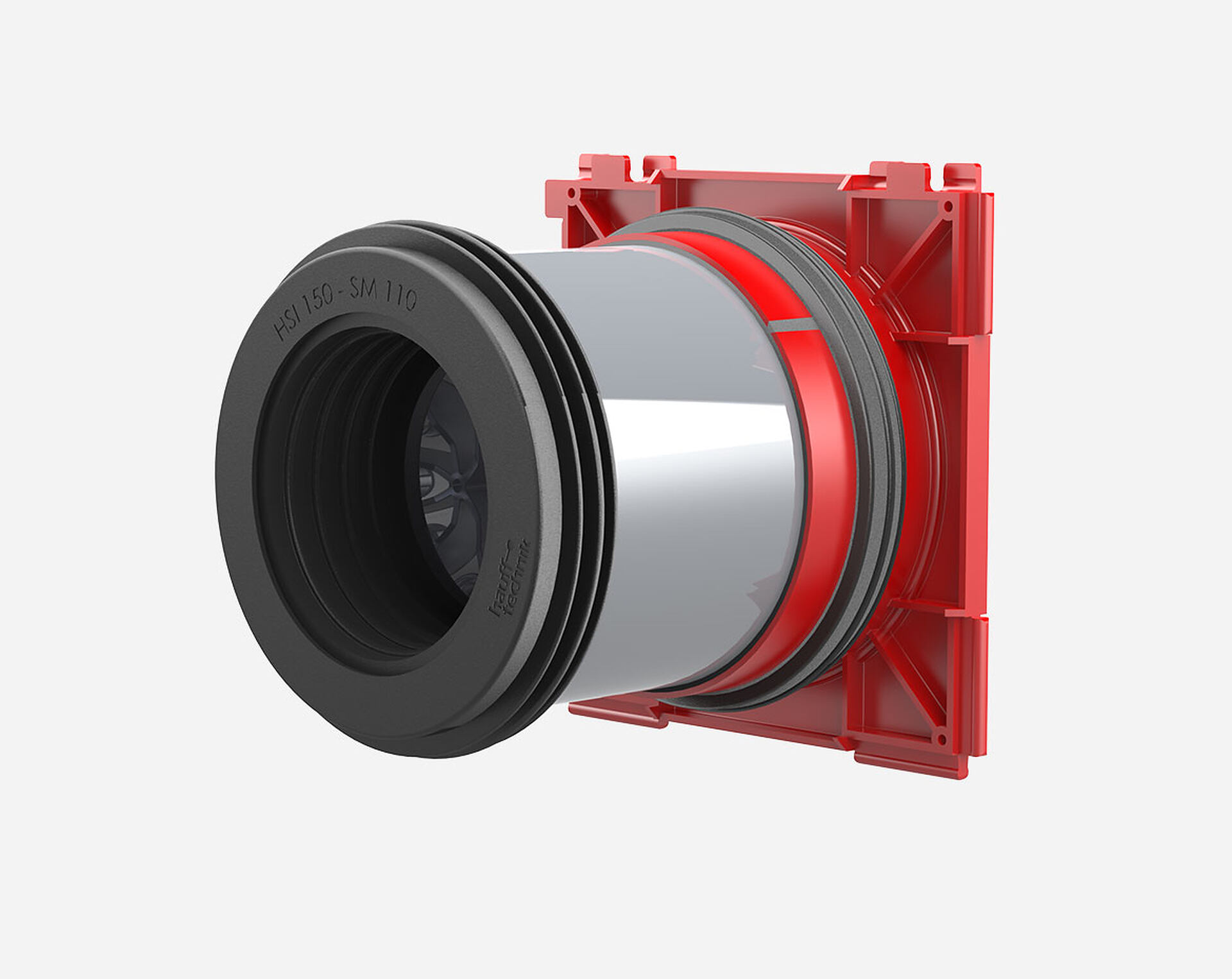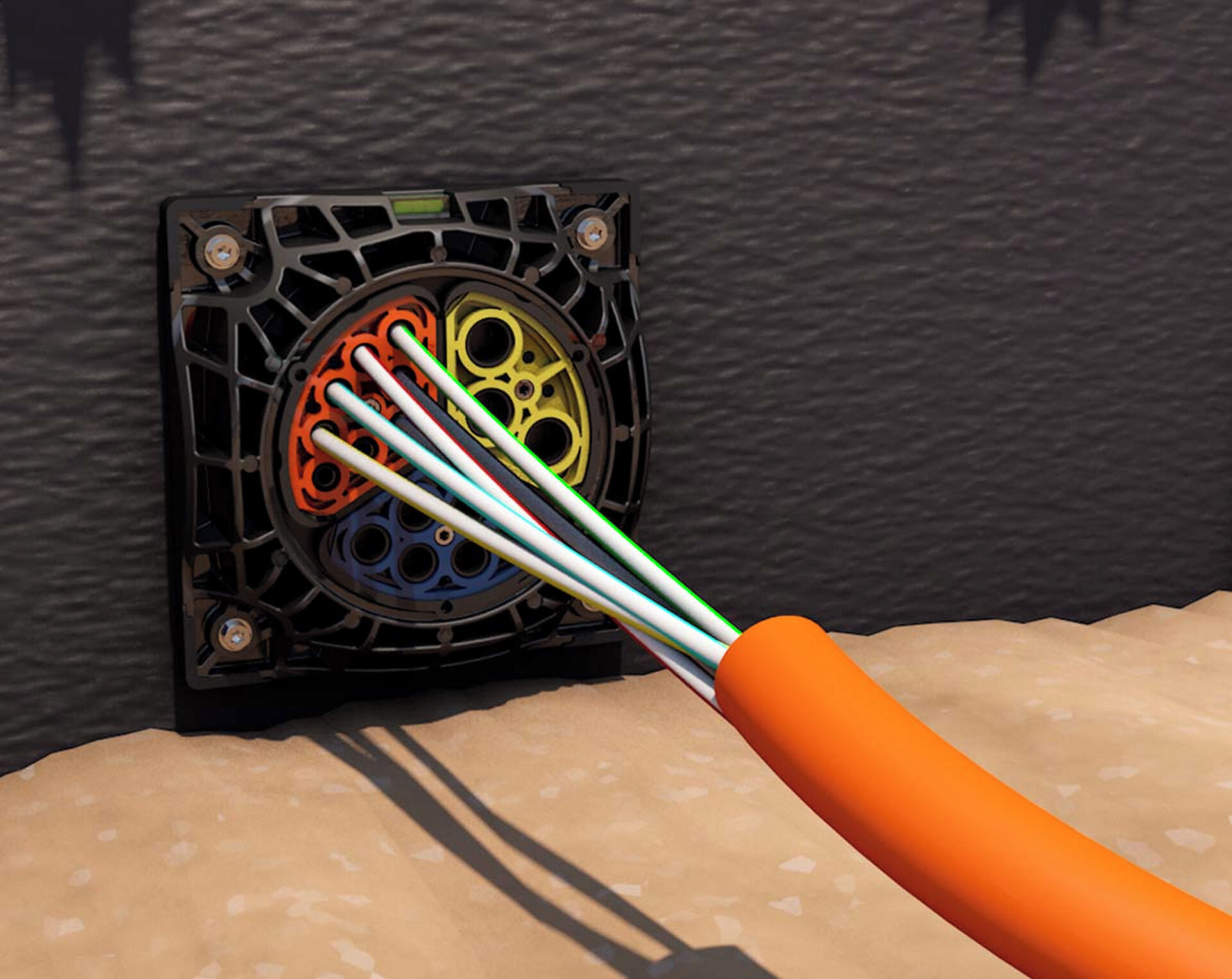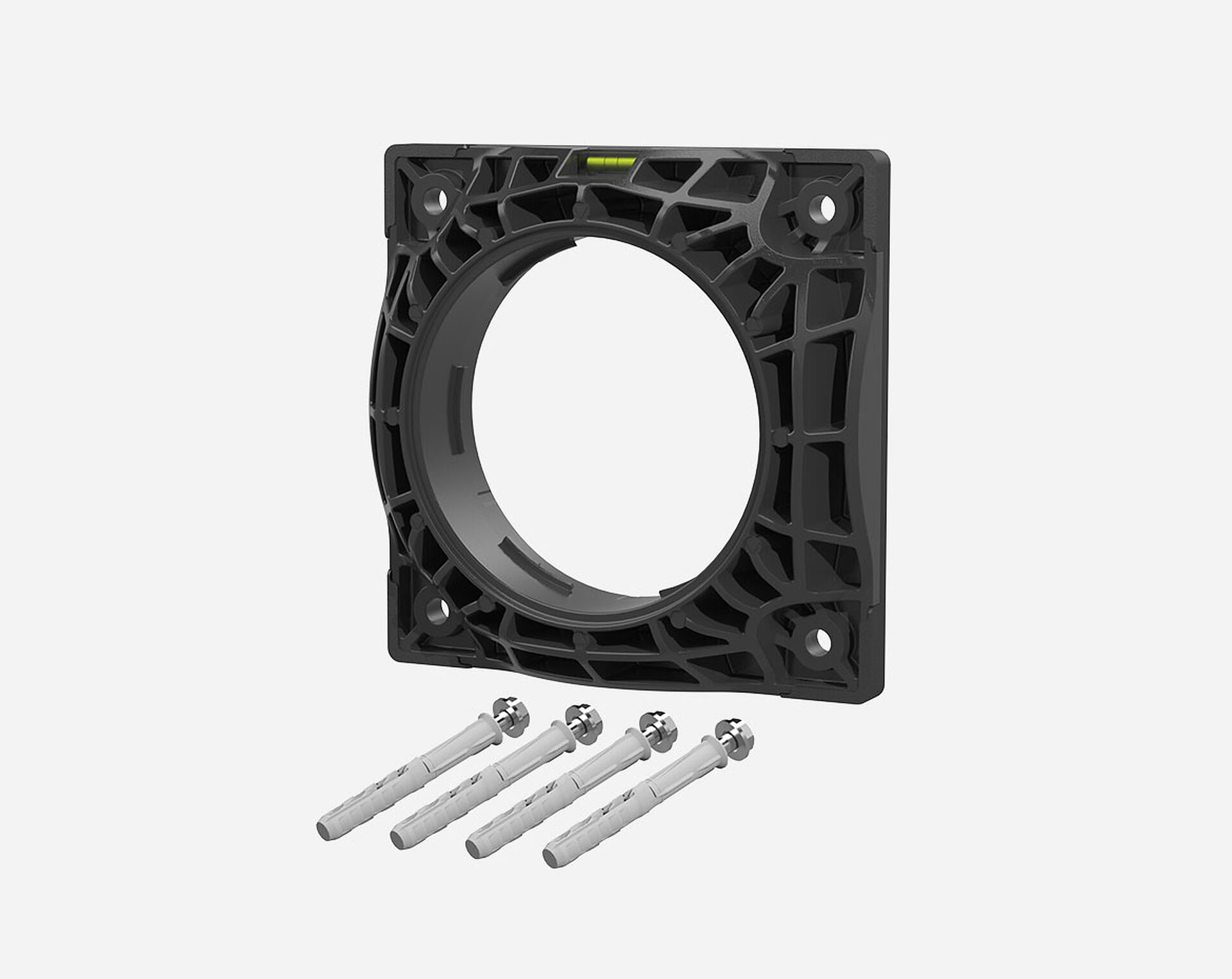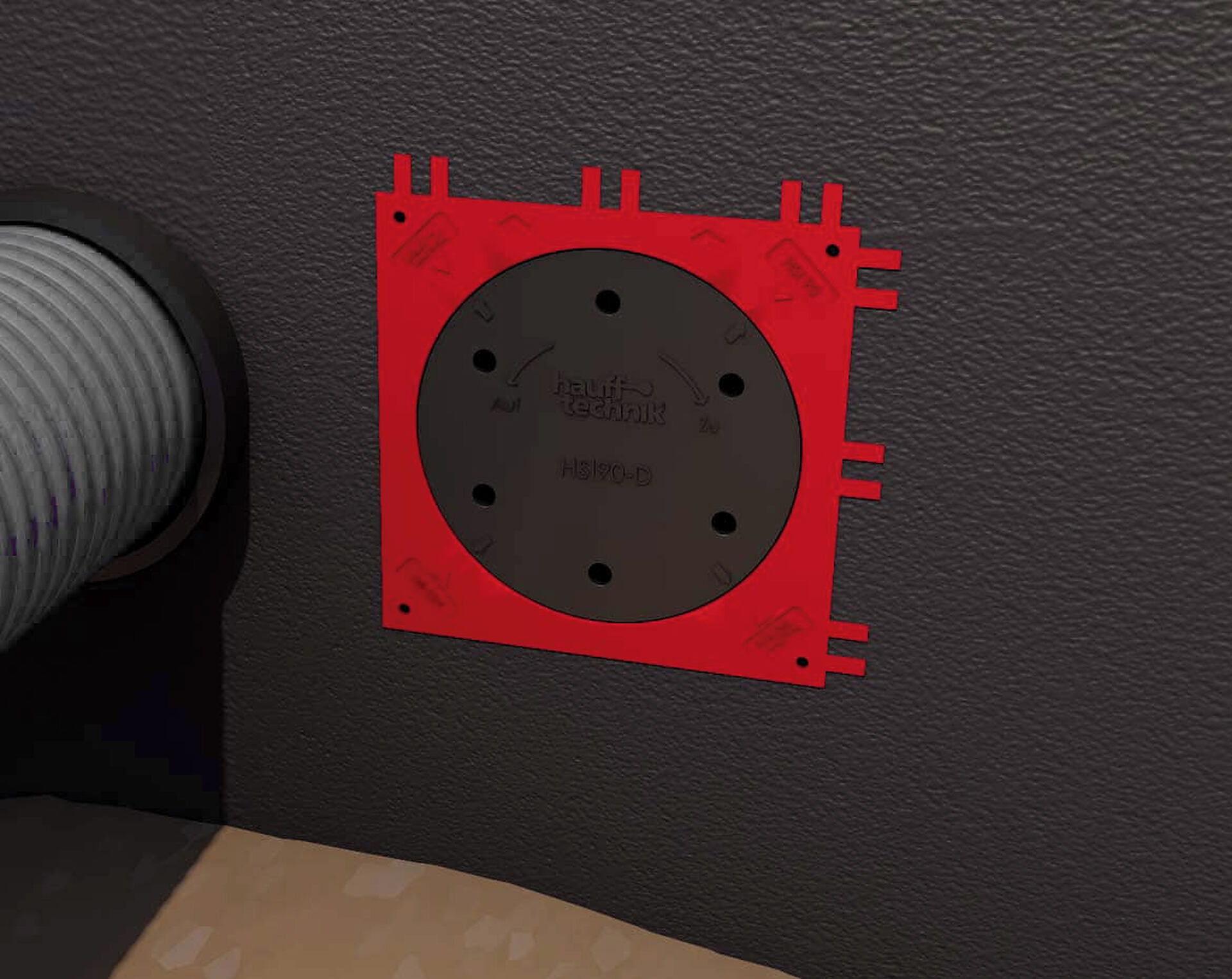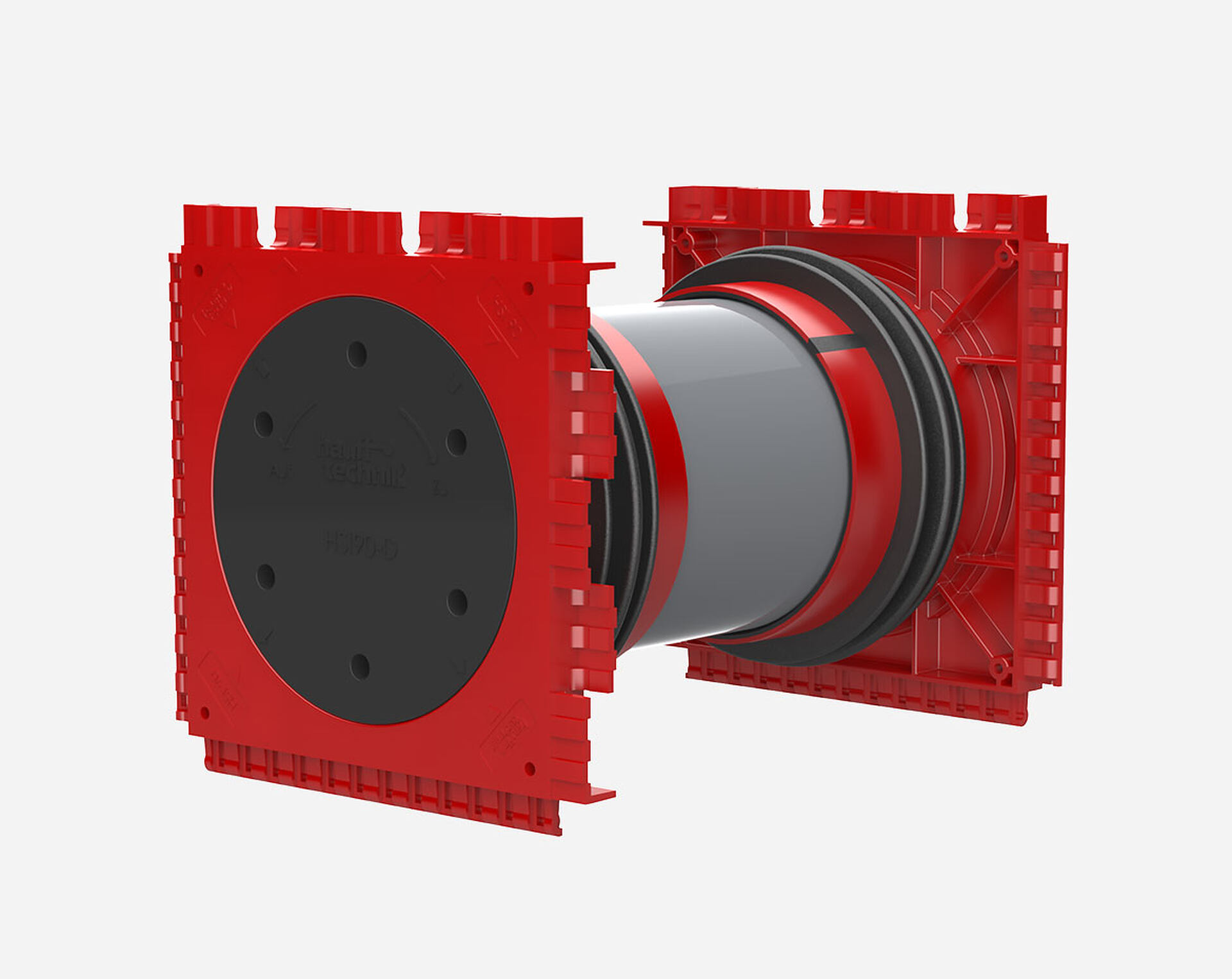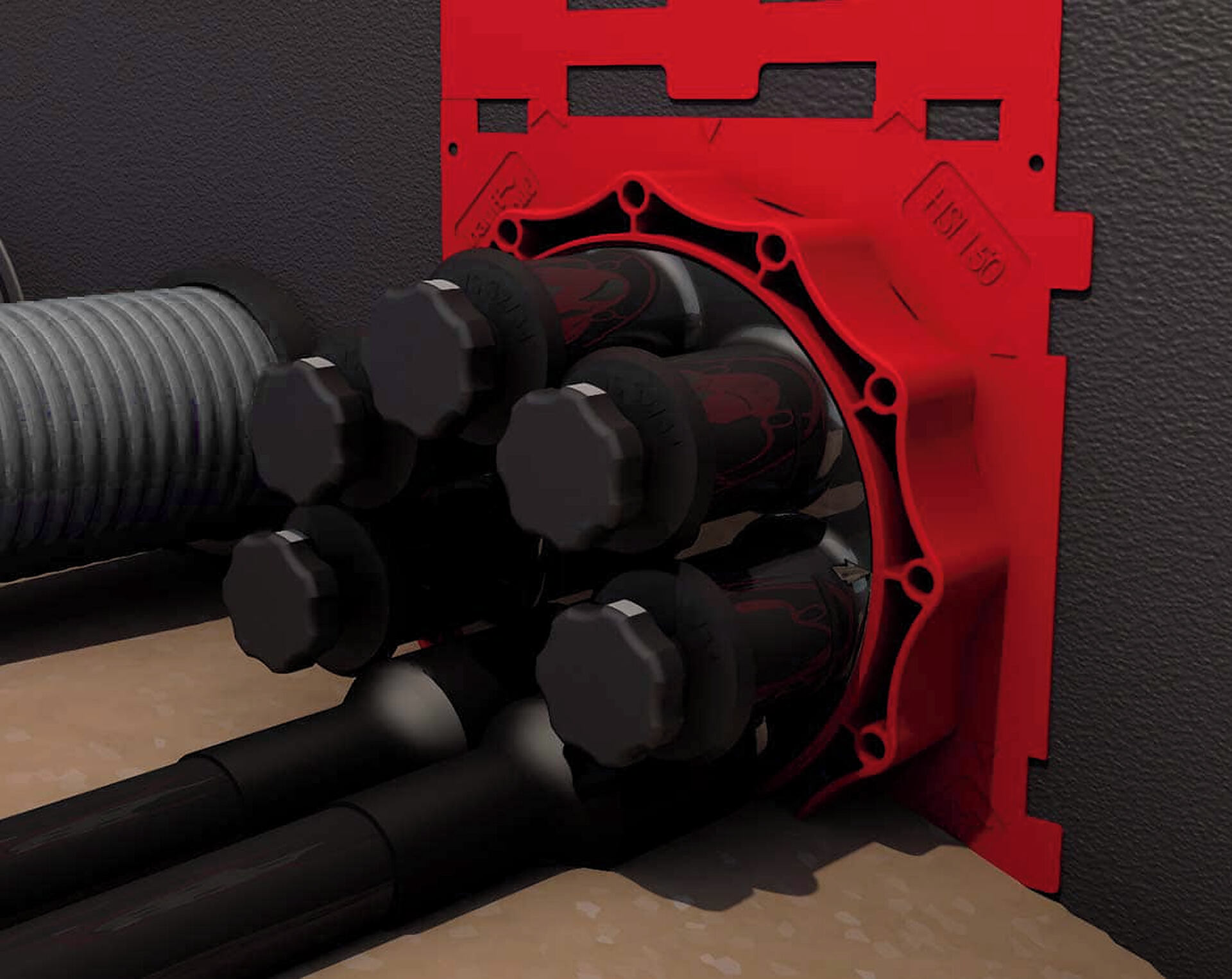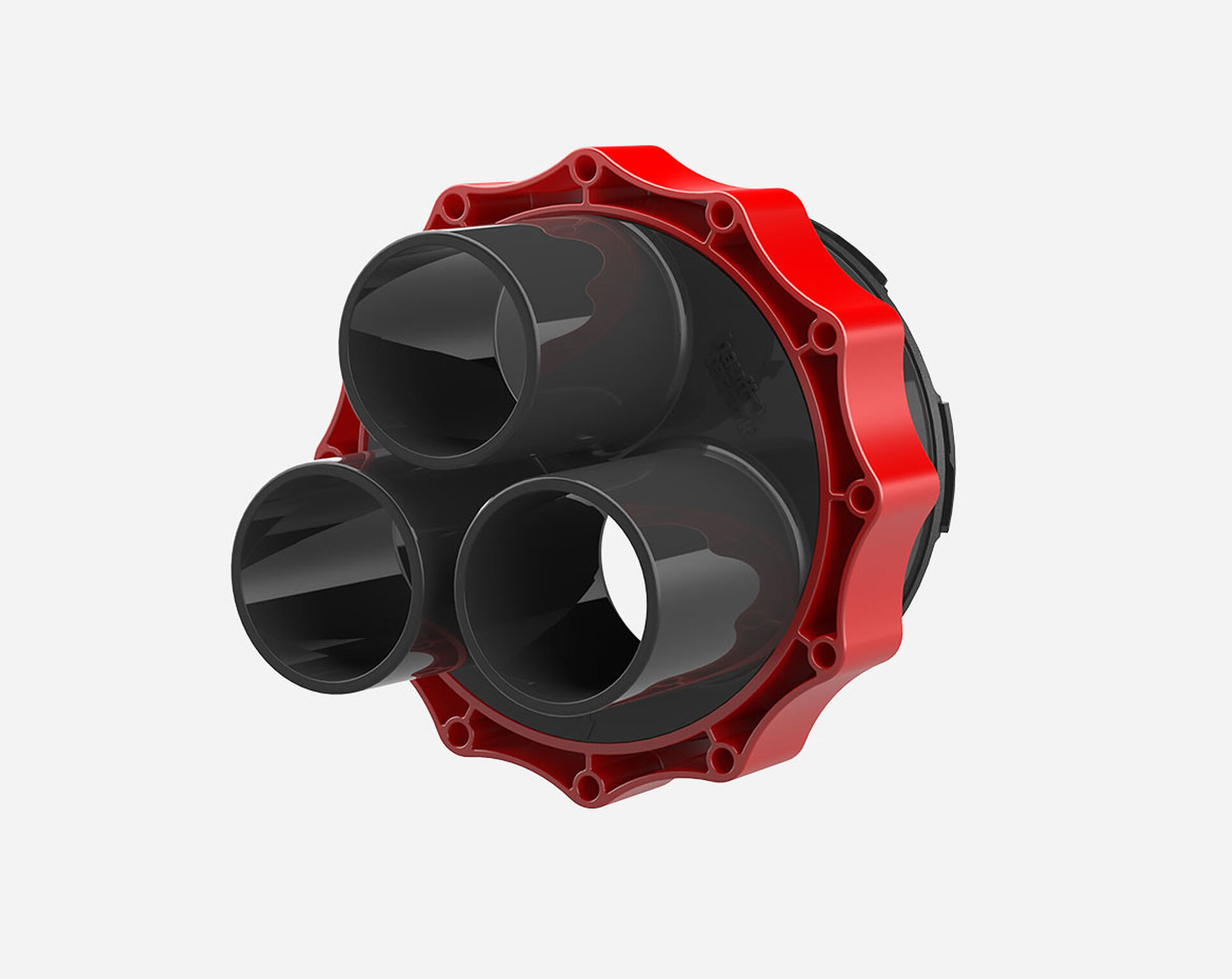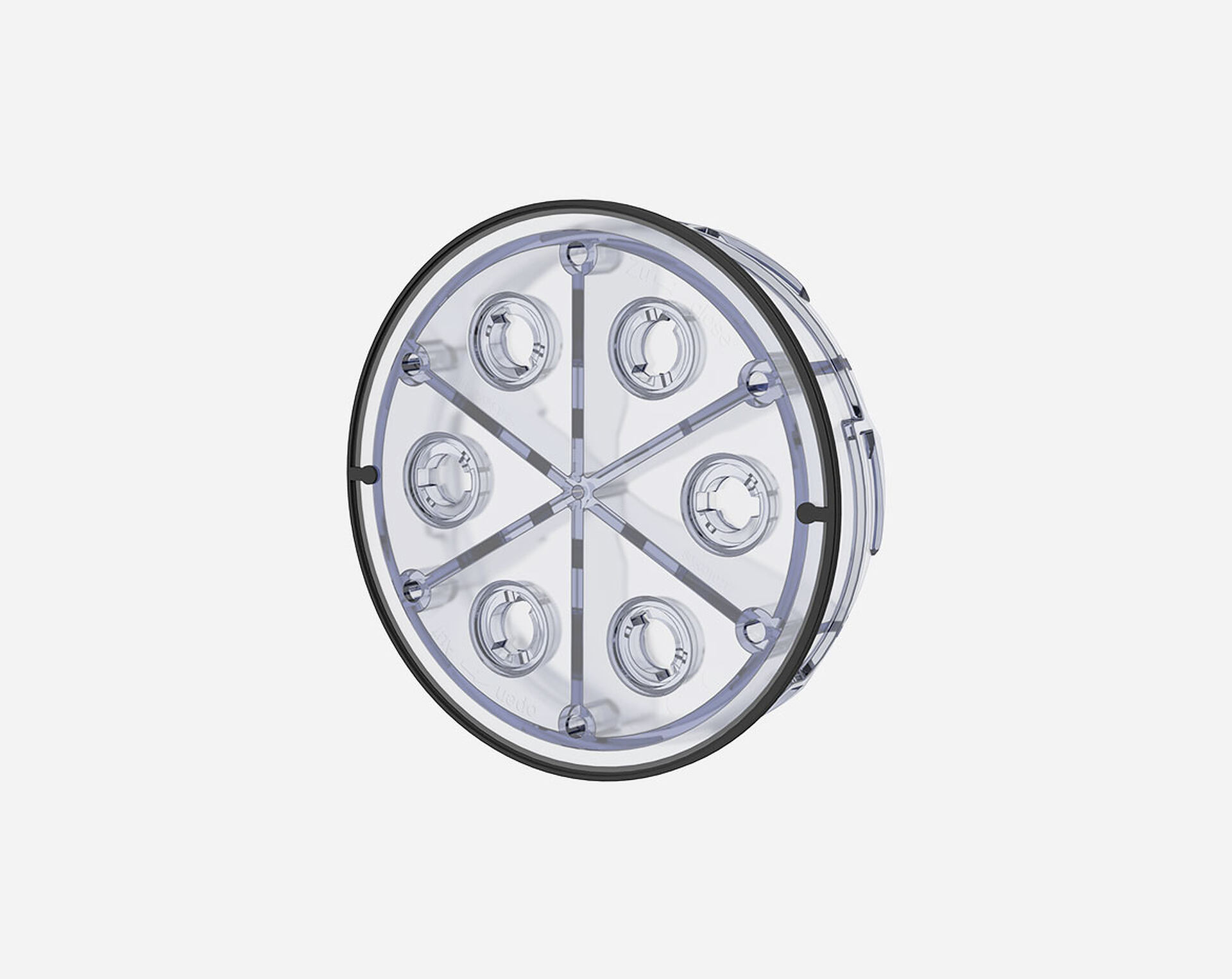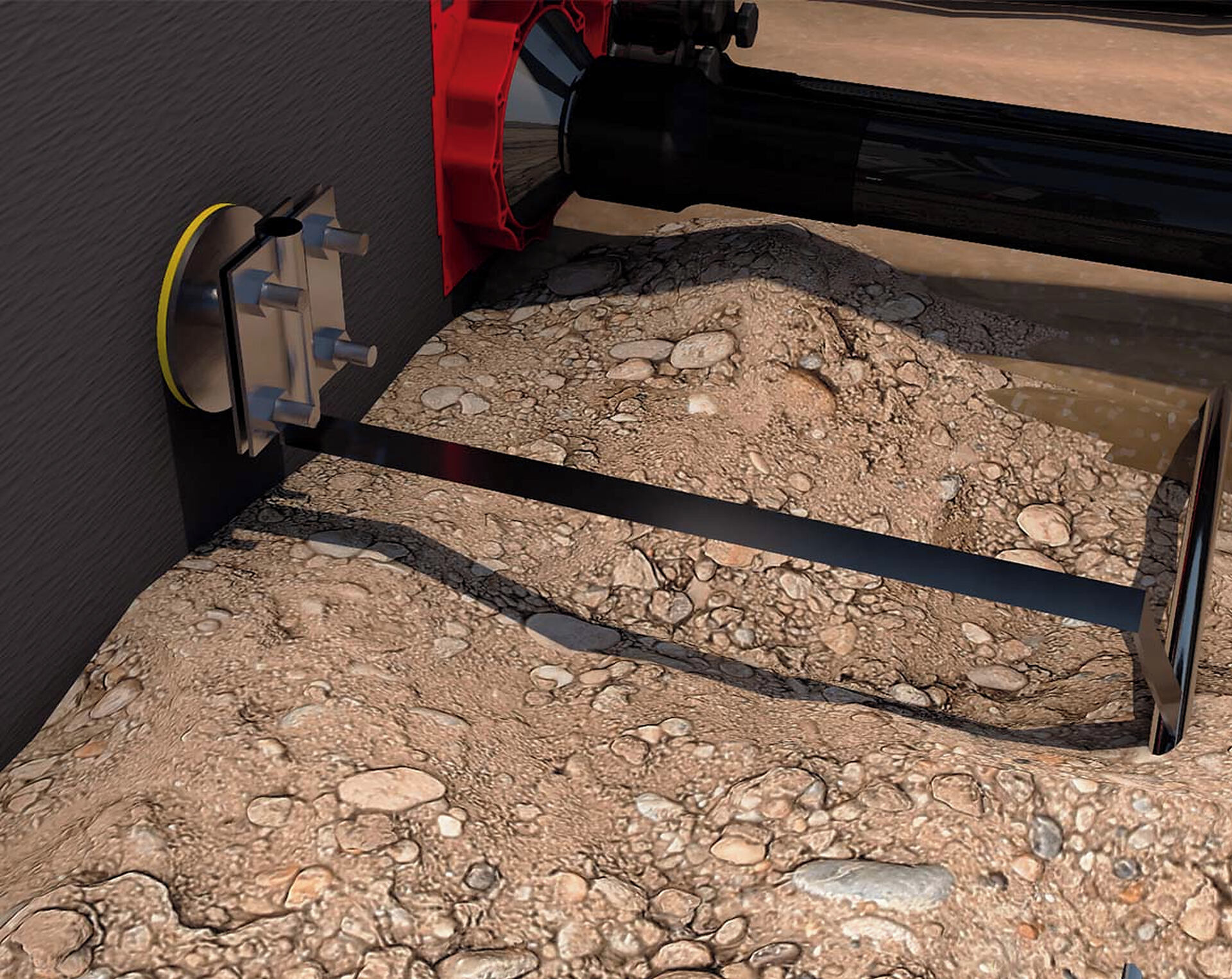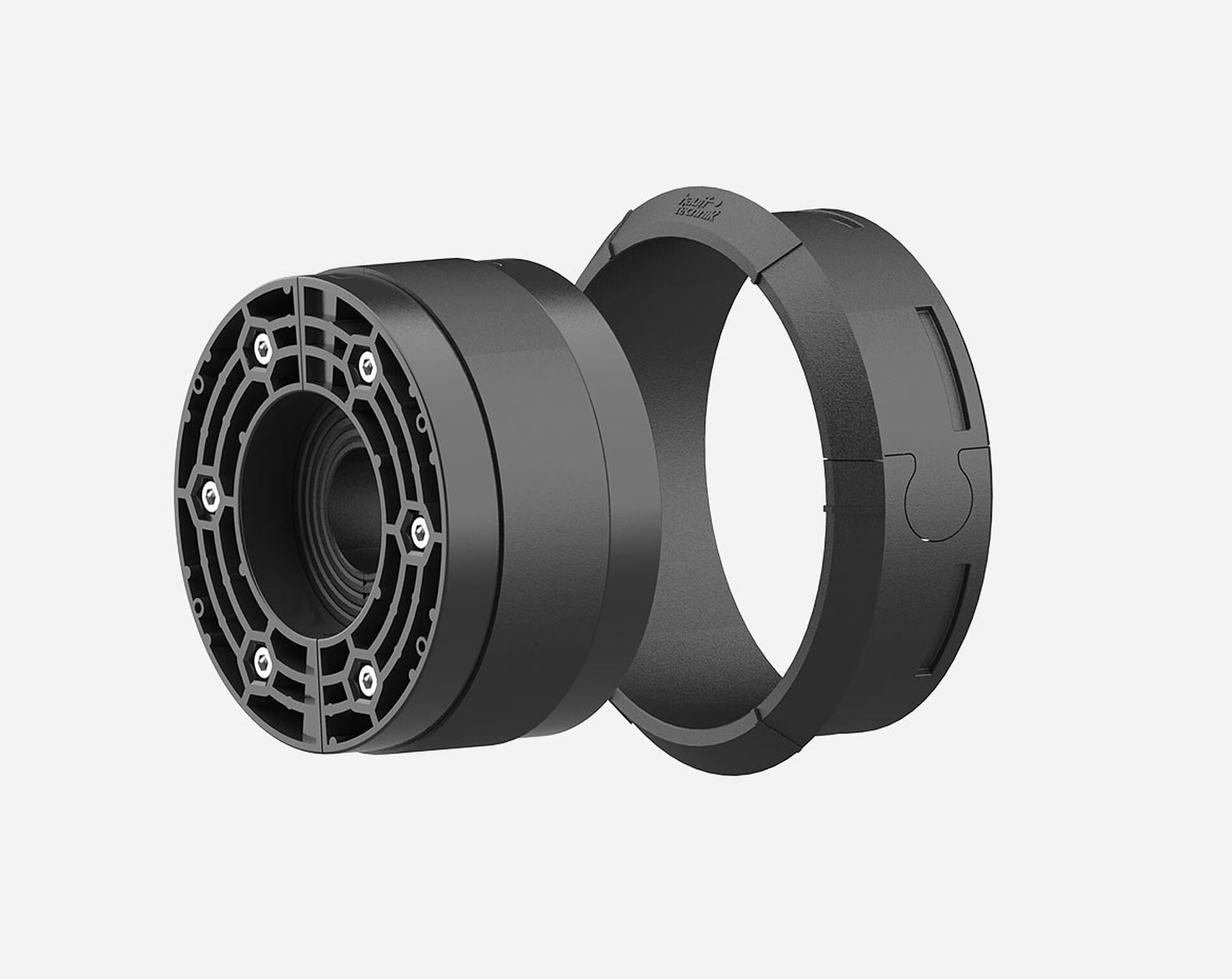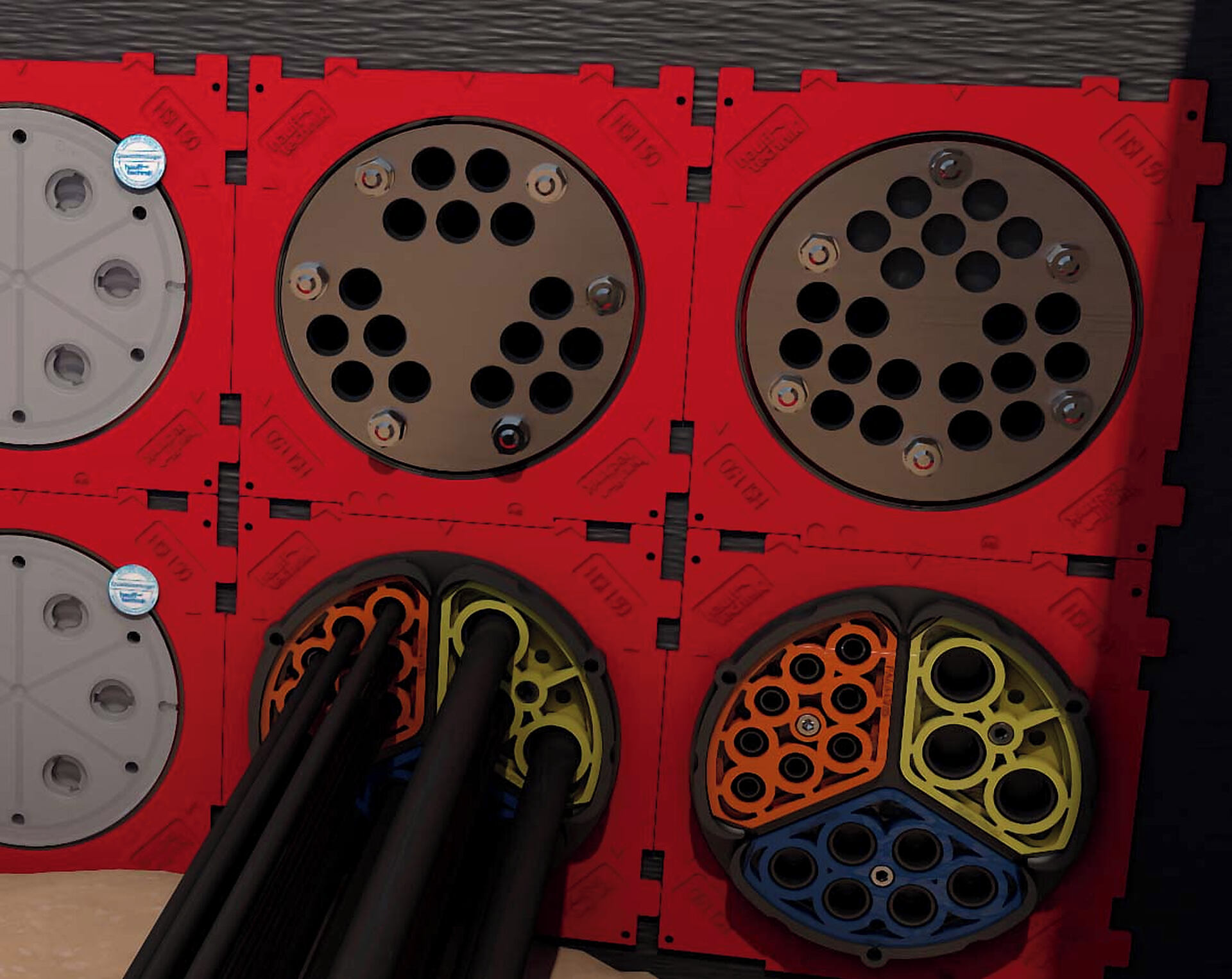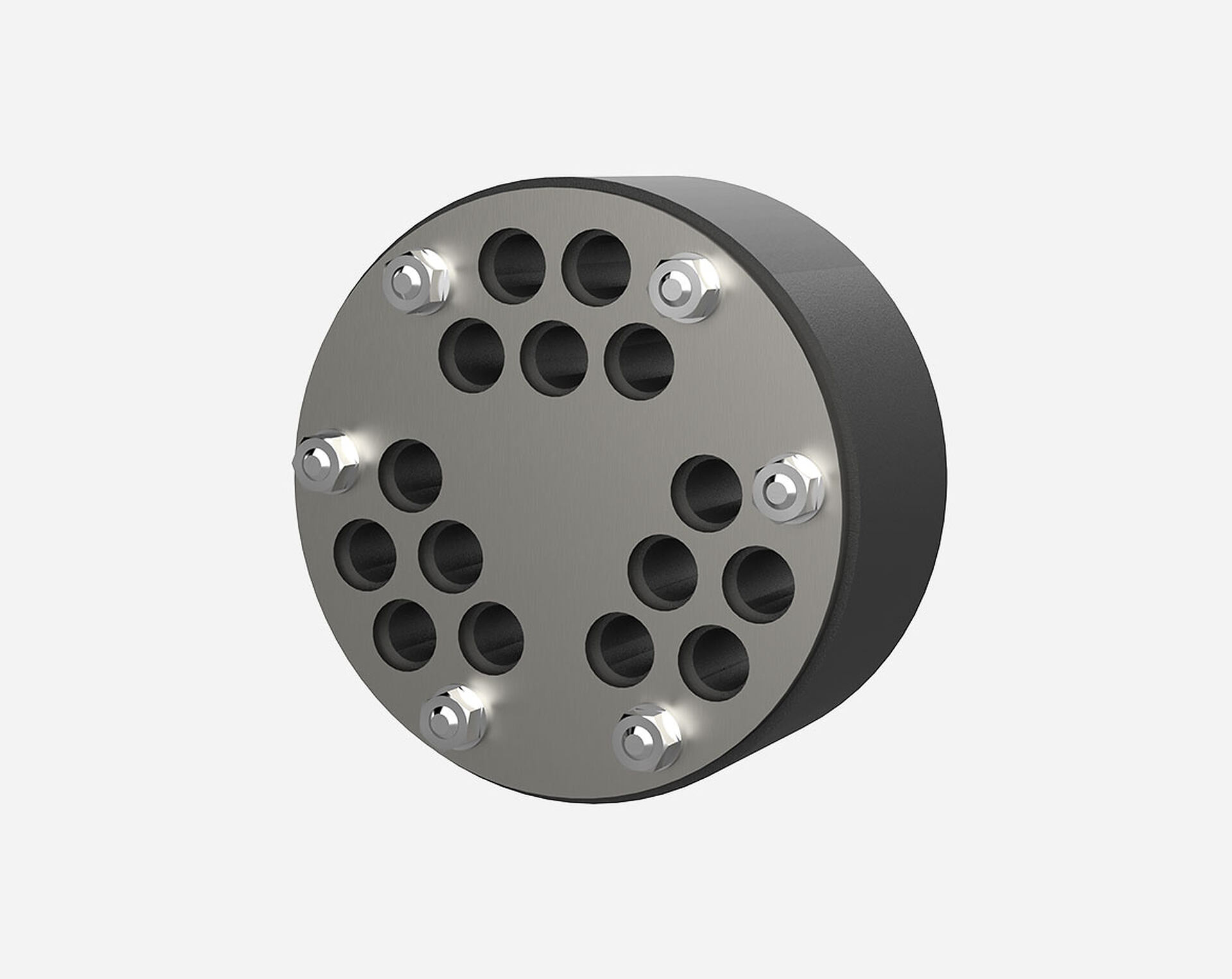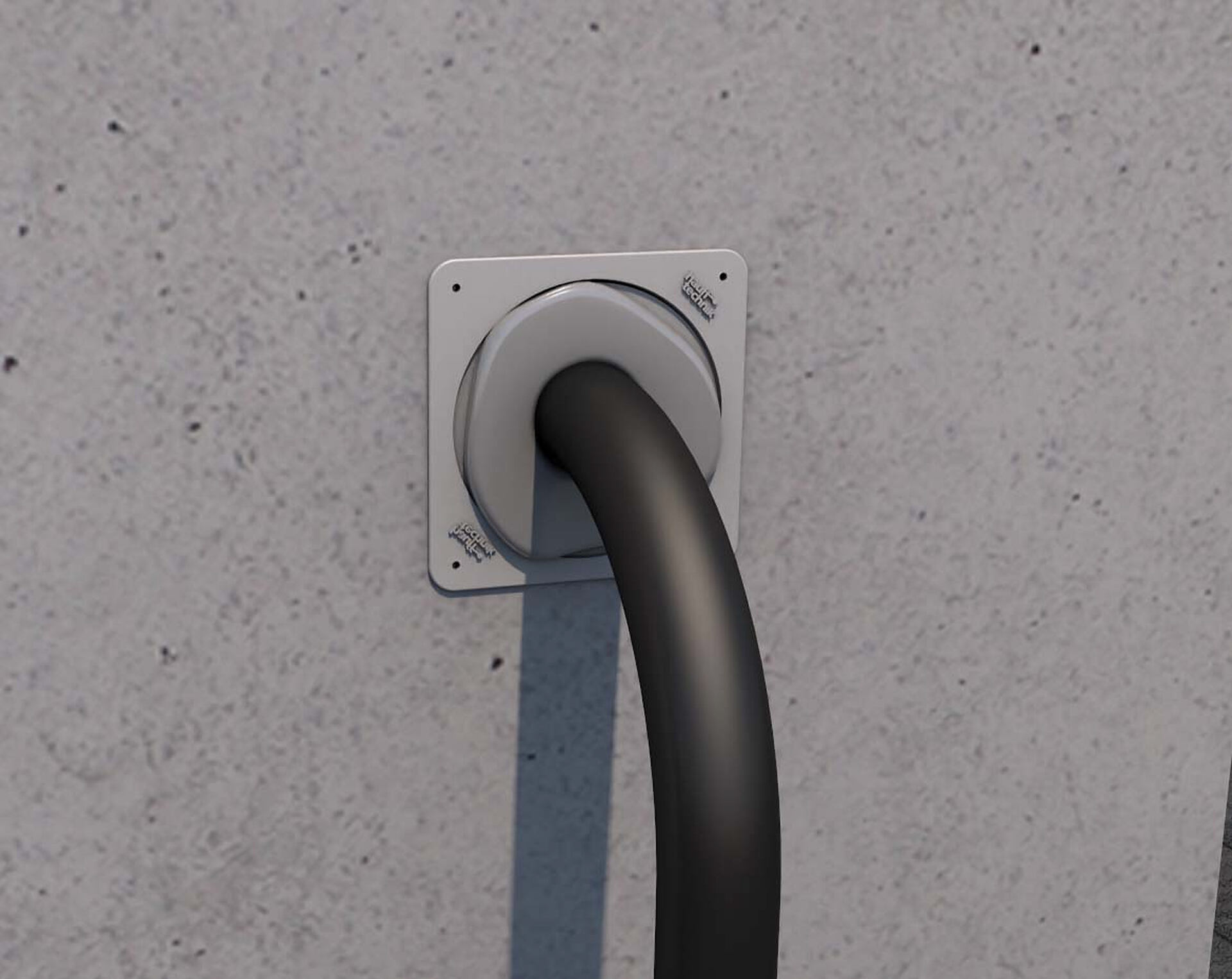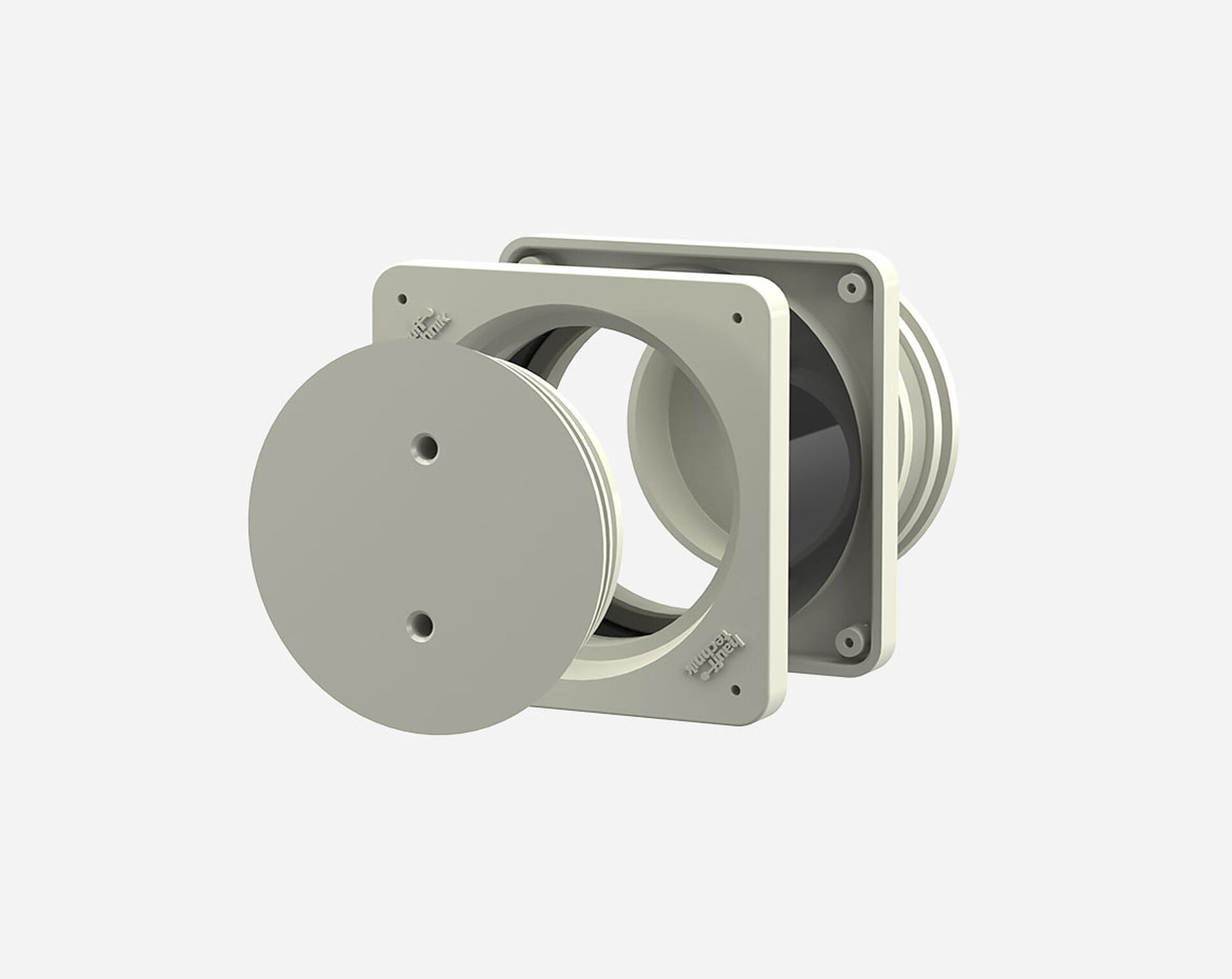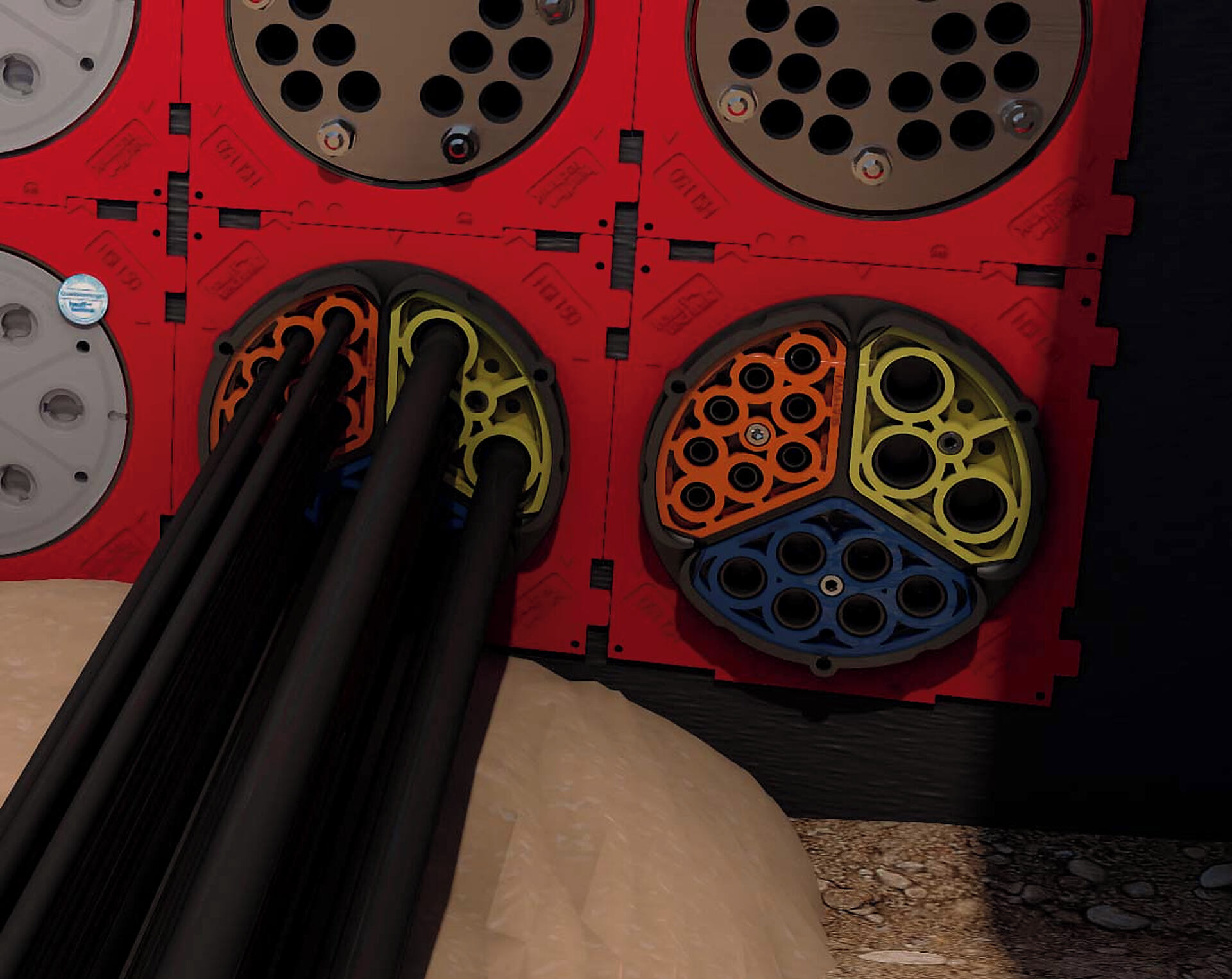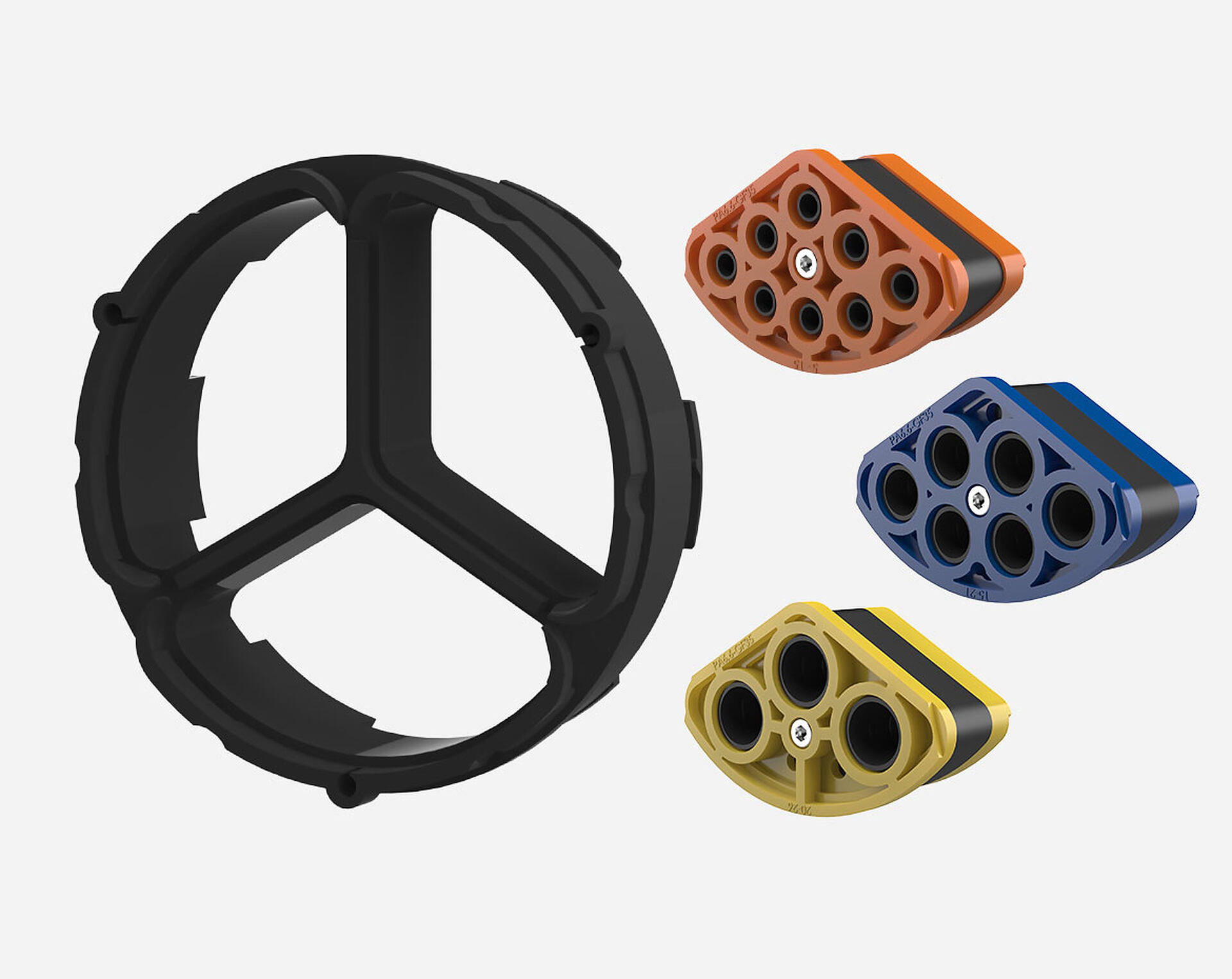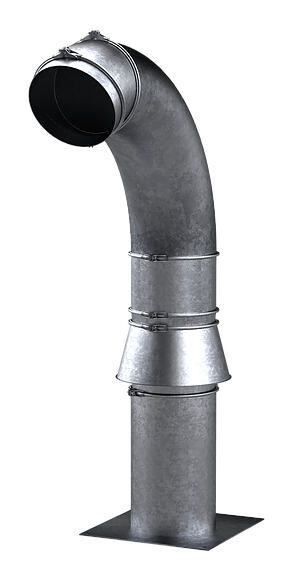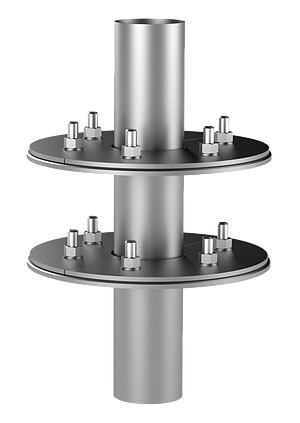Roof entries
Sealing cables and lines for solar, HVAC and mobile communications systems pose our customers with major challenges every single time. Hauff-Technik can offer roof entries like the SHD swan neck entry or HRD-FUFF(A) wall sleeves with fixed/loose flange that are tailor-made to provide the best possible solution for the corresponding roof construction and customer-specific application. The seals between the building and the cables and lines are established with press seals tailor-made specifically to meet customer requirements. We are happy to propose other solutions on request.
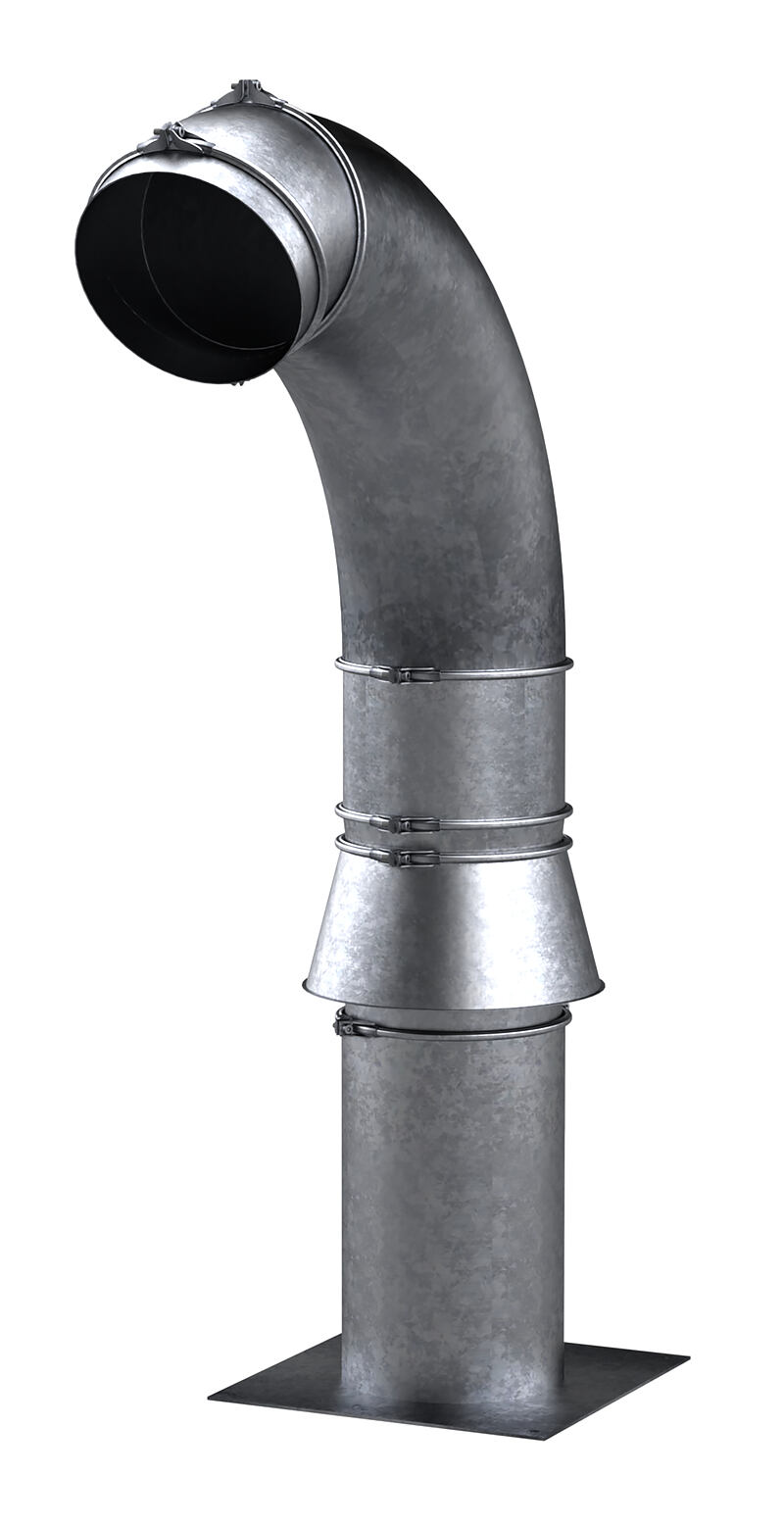
Swan neck roof entry
Roof Entries by Hauff-Technik for the Safe Introduction of Cables and Lines
As more technology is being installed on rooftops today, the need for roof entries has also increased. For example, cables from solar energy systems, air conditioning units, and mobile communication installations must be routed into buildings. Roof entries provide an effective solution for accommodating these utility lines.
Roof Entries for Flat Roof Installations
Hauff-Technik's swan neck roof entries are the ideal solution for installing cables and conduits on flat roofs. Engineered for durability and weather resistance through hot-dip galvanization, these entries effectively accommodate various cable types in the base area, similar to single house entries. The comprehensive system from Hauff-Technik is designed with modular components, providing exceptional flexibility during installation. This innovative system includes pipe bends, removable intermediate pieces, and extension pipes, along with a base pipe that is routed through the roof insulation. After installation, height adjustments are easily achievable, ensuring a customized fit for every project.
The swan neck design allows for continuous rotation of 360 degrees, enhancing its adaptability. The downward incline of the rounded pipes at the outlet improves weather resistance while optimizing the arrangement of cable bundles, effectively safeguarding against potential damage.
For insulated flat roofs equipped with two sealing membranes, a retrofitted roof entry is also a feasible option. This involves the use of two-level fixed/movable flanges, which Hauff-Technik offers for concrete embedding or as a variant for post-installation bolting. Each of these solutions adheres to the DIN 18531 standard, ensuring reliability and compliance. Made from stainless steel, these roof entries promise robustness and longevity.
Customers can choose between V2A and V4A stainless steel options. The V4A stainless steel variants offer superior resistance to chloride-containing substances due to their molybdenum alloy, making them particularly suitable for applications in the chemical industry or swimming pools. Just like gas house entries, these roof installations are designed to be both gas- and watertight.
Hauff-Technik's roof entries are available in a wide range of sizes. The gooseneck entries come with diameters from 100 to 300 mm, while the two-level fixed/movable flanges accommodate media pipes of up to 450 mm in diameter. The casing pipes are available in sizes ranging from 80 to 500 mm, facilitating seamless installation directly onto the respective pipe. Hauff-Technik also offers custom-designed roof entries tailored to meet specific customer requirements.
Sealing Systems for Roof Penetrations
The sealing of roof entries is an essential consideration in building construction. These seals must ensure a complete airtight and watertight fit for optimal performance over many years. Without proper sealing, buildings may suffer damage from rainwater infiltration or the condensation of humidity within the structure.
To effectively manage this issue, Hauff-Technik provides high-quality annular space seals. These seals play a vital role in various applications, including gas house entries, ensuring fully gas- and watertight transitions for house connections located on the roof. The cable sealing SKD by Hauff-Technik is particularly effective for gooseneck penetrations, crafted from durable EPDM rubber. This material is also employed in seals for single house entries, guaranteeing reliability. Furthermore, Hauff-Technik offers the option for custom-made annular space seals tailored to specific project needs.
A significant benefit of the annular space seals is their ability to accommodate multiple cables through a single unit. The number of cables that can be routed depends on the sealing system chosen, as well as the dimensions and types of cables. This versatility simplifies the installation of solar, HVAC, and telecommunication lines on the roof.
The design of Hauff-Technik’s system allows for easy retrofitting. Each roof entry comes with sealing inserts, ensuring they remain airtight even when not in use. This design allows for later installation of additional cables through previously unused roof penetrations, offering enhanced flexibility. As a result, this approach eliminates the need for costly and complex installations of new house entries for future expansions of roof-mounted technologies.
Easy and Quick Installation of Roof Entries by Hauff-Technik
The thoughtful design of Hauff-Technik’s roof entries ensures that the installation of cables and pipes can be completed swiftly and easily. This applies whether you’re working during the construction phase or adding components later. To install the HRD cable and pipe sealing, just a cordless screwdriver and a torque wrench will do. The process for retrofitting the two-level fixed/loose flange is equally simple, requiring only a punch, hammer, scissors or cutter, torque wrench, and socket set.
Help us improve our website service.
Where would you place yourself?
Architect & designer
Wholesaler
Telecoms
Utility company
Installer
Construction company

Please choose your region




-
 Belgium
Belgium
-
 Česko
Česko
-
 Danmark
Danmark
-
 Deutschland
Deutschland
-
 España
España
-
 France
France
-
 Global
Global
-
 Hrvatska
Hrvatska
-
 Italia
Italia
-
 Luxembourg
Luxembourg
-
 Magyarország
Magyarország
-
 Nederland
Nederland
-
 Österreich
Österreich
-
 Polska
Polska
-
 Schweiz
Schweiz
-
 Slovenija
Slovenija
-
 Slovensko
Slovensko
-
 Sverige
Sverige
-
 United Kingdom
United Kingdom
-
 Global
Global
-
 USA
USA
-
 Global
Global
-
 India
India
-
 中国
中国
-
 Global
Global
-
 الإمارات العربية المتحدة
الإمارات العربية المتحدة





